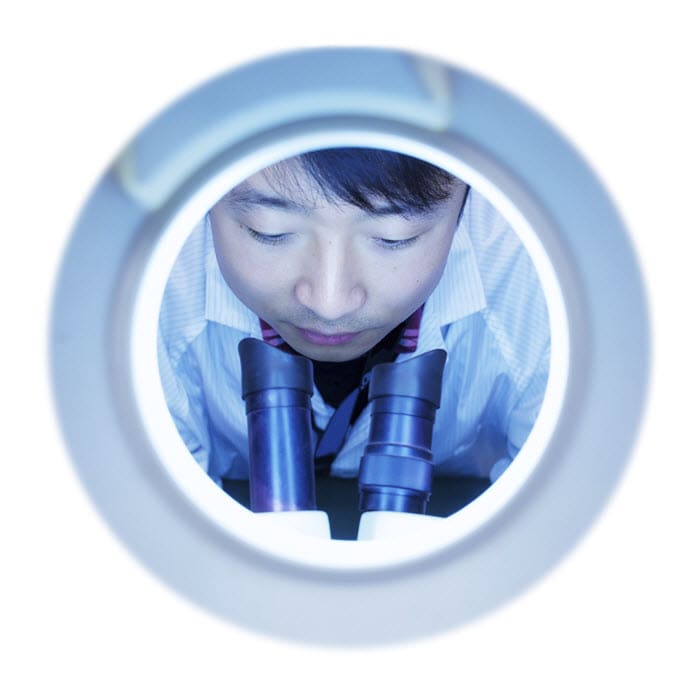Intellectual property theft prevention in life sciences has been saved

Perspectives
Intellectual property theft prevention in life sciences
Managing the risks for information security
Cyberattacks on life sciences companies are less likely to be breaches and more likely to be attempts to steal intellectual property (IP). Adopting a Secure.Vigilant.Resilient. approach can help life sciences information security programs aggressively protect their drug formulas, product blueprints, R&D documentation, and more.
Explore content
- Property theft prevention in life sciences
- Increasing concerns about IP theft
- A Secure.Vigilant.Resilient.™ approach to protecting IP
- A foundation for incremental, phase improvements
- Let's talk
The value of life sciences IP
Intellectual property can constitute up to 80 percent of a company's value.
This holds true in the life sciences industry as well. Few things are more critical to a pharmaceutical company than the formula for one of its drugs. Or for a medical device manufacturer, the blueprint for its latest product. In short, intellectual property theft prevention is critical to the viability of a life sciences company.
Awareness of IP cyber risk may be rising. But for life sciences, companies, life sciences information security programs often relegate protecting IP from cyber theft to the back seat. Given the extraordinarily high costs to bring products from development to launch, a reexamination of priorities may be crucial in protecting company value.
Increasing concerns about IP theft
Why is there growing concern in life sciences about IP theft?
- Cyber threats are more sophisticated and widespread. Attackers focus on areas where returns are greatest relative to the effort invested and where the likelihood of success is high relative to the risks of failure. From this perspective, life sciences IP may be an especially attractive target for attackers.
- Thieves can steal competitive advantage. With a drug formula or product blueprint in hand, thieves can substantially shorten delivery time, eliminate massive development costs, or reduce the effort to get a drug through regulatory hurdles.
- The odds of a successful attack may be higher in life sciences. Many organizations haven't invested in cyber risk programs in tandem with their evolving innovation and research and development (R&D) models.
- Life sciences companies' defenses can be vulnerable. Where cyber-related regulations haven't forced strong cybersecurity investments, a life sciences company's ability to detect and respond to attacks can be very challenging, especially relative to the value of the IP it's holding.
But with an IP-focused life sciences information security program, organizations can up the ante for the attackers and significantly alter the odds of becoming a victim.

A Secure.Vigilant.Resilient.™ approach to protecting IP
Technology alone can't protect against the intelligence, access operations, and capabilities of a sophisticated and ongoing cyber threat.
Deloitte encourages companies to take a Secure.Vigilant.Resilient. approach to managing cyber risk. The premise is that no environment is completely secure. Effective life sciences information security programs accept that some attacks will be successful.
Rather than focusing only on keeping threats out, they balance four dimensions:
- Secure: Protecting critical assets against known and emerging threats
- Vigilant: Maintaining threat awareness and the ability to detect adversarial activity
- Resilient: Being prepared to recover quickly when incidents occur
- Strategy and governance: Making sure the three dimensions of the program (Secure, Vigilant, Resilient) are successful via oversight and metrics
Depending on the specific threats a company faces, which can shift over time as threats and business risk profiles change, some of these areas may be more important than others.
A foundation for incremental, phase improvements
Cyber incidents aimed at appropriating IP have the potential to cripple life sciences companies far more than the damage done by traditional data breaches. Loss of IP can harm a company's competitive standing and market valuation. It can also cause rippling operational injury as the organization scrambles to adjust its business strategies to compensate.
For this reason, it's imperative that life sciences companies maintain their focus on intellectual property theft prevention. And that they protect their IP beyond the minimum standards to meet compliance mandates by investing aggressively in life sciences information security programs.
While a Secure.Vigilant.Resilient. program is broad and involves many aspects of an organization, building and improving such a program is an evolutionary process. Many companies have a lot of catching up to do. But regardless of their current maturity level, most organizations have a solid starting point in each of the three areas that, with strong executive sponsorship, can be used as a foundation for incremental, phased improvements.

If you'd like to read the full report, download "Guarding the lifeblood of life sciences: Managing the risk of intellectual property cyber theft." To learn more about Life Sciences & Health Care, visit our Life Sciences & Health Care industry page.
Let's talk
If you’re interested in learning more, please contact us. We’d be happy to schedule a meeting with you and your team.
Larry Samano
|
 |
Keith Brogan
|
 |
Jason Frame
|
 |
Recommendations
Beneath the surface of a cyberattack
A deeper look at business impacts


